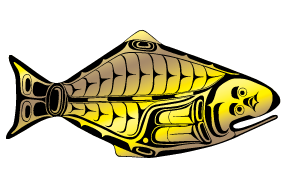Depredation (physical removal) of catch from longline fishing gear by marine mammals (Figure 1), particularly by toothed whales (suborder Odontoceti), is a growing challenge both to commercial fishers as well as researchers surveying fish stock abundance (Sigler et al. 2008, Tixier et al. 2021). It is suspected that this behavior is increasing, partially due to the cessation of large-scale whaling, and also due to the introduction of quota-based fishing (SEASWAP, unpublished data)1 that has made captured fish available to whales over a much longer fishing season each year, compared to the short derby fisheries. Whales targeting longline gear present challenges to fishers (loss of catch, reduced efficiency), fisheries managers (accurate removal estimation), and to the whales themselves (injury risk, disruption of social structures, developing artificial reliance on non-primary food sources that can be affected by fishery dynamics).. Over the long term, depredation could lead to the loss of productive fishing grounds.
The Pacific halibut fishery has experienced various challenges with respect to depredators over the years. In the 1950s and 1960s, sea lion (suborder Pinnipedia) depredation of Pacific halibut was a problem for the fishery. Over the past two decades, the IPHC has been receiving increasing reports of whale depredation events occurring on the fishing grounds, and some harvesters have reported being driven off traditionally productive grounds as a result. The IPHC Fishery-Independent Setline Survey (FISS) has also encountered depredation events over the years.
Categorizing whale interactions can help researchers understand potential impacts of this behavior on their data sets and provide meaningful observations for the fleet in general. Since 2009 the IPHC has been collecting more refined data regarding whale interactions on its FISS (Dykstra and Soderlund, 2010). Preliminary analysis suggest that killer whale (Orcinus orca) interactions are associated with decreases in target catch rates, as well as substantial damage to both gear and captured fish. Sperm whale (Physeter macrocephalus) interactions are more difficult to quantify, with less obvious damage to the catch (Wong, 2015). However, the data indicate that while there is less-obvious damage to the catch compared to killer whales, increased gear damage is incurred when sperm whales are present during hauling operations. These data can be used to determine when FISS data should be excluded from stock assessment analyses due to depredator interactions, and provides valuable observations for other agencies that are also struggling to resolve depredation impacts within their survey data, as well as for individuals who are looking to identify ways to minimize depredation events. IPHC continues to work on avenues to better categorize and quantify the effect of depredation, including logbook modifications and other ongoing research.
Many efforts have been made over the years to mitigate this problem, with fishers generally limited to simple methods that can be constructed, deployed, or enacted without significantly disrupting normal fishing operations, or without violating gear regulations. Existing approaches include catch protection, physical and auditory deterrents, and spatial or temporal avoidance. These approaches have had variable degrees of success and ease of adoption, but none have solved the problem. Terminal gear modification and catch protection have been identified as an avenue with the highest likelihood of ‘breaking the reward cycle’ in depredation behaviors (Werner et al. 2015). The IPHC Secretariat has determined that research to provide the Pacific halibut fishery with tools to reduce whale depredation is considered a high priority. This research is now integrated as one of the five main research areas within the 5-year Program of Integrated Research and Monitoring (2022-2026). Towards this goal, the IPHC secretariat has been investigating gear-based approaches to catch protection as a means for minimizing whale depredation in the Pacific halibut and other longline fisheries. The objectives of this study are to: 1) work with fishermen and gear manufacturers, via direct communication and through an International Workshop, to identify effective methods for protecting hook-captured flatfish from depredation; and 2) develop and pilot test two simple, low-cost catch-protection designs that can be deployed effectively using current longline fishing techniques and on vessels currently operating in the Northeast Pacific Ocean.
Common successes and failures of various iterations of protection approaches, and general observations were discussed and summarized in the published report of the Workshop, with a particular focus on those elements that are suitable to be adapted for the protection of longline captured Pacific halibut. The second phase of the project was to incorporate the top catch protection design outcomes of the workshop into functional prototypes and conducting field-testing in longline sea trials. The two selected catch protection devices were: a) an underwater shuttle and b) a branch gear with a sliding shroud system.
The underwater catch-protection shuttle (Figure 3) was manufactured by Sago Solutions. The aluminum shuttle operates by sliding down the groundline during the hauling event, encountering the hooks and catch near the seabed, mechanically unhooking fish and entraining them in the storage area (Figure 2). After securing the catch, the device encounters a stopper and is hauled to the surface with fish inside. At the surface the device is hoisted aboard using a boom and winch.
Branch line fishing is a modification of longline fishing, wherein hooks are affixed to weighted side branches as opposed to the main groundline. This configuration allows for the introduction of a shroud device, which slides down to cover the hooks and associated catch during the hauling event. Shrouds were created by modifying commercially available ‘slinky pots’ to have an opening on one end, and a closed end cap on the other (Figure 3A). Hooks with short stiff gangions (Figure 3B) were attached to snaps of decreasing tension, to keep fish close to the branch line with minimal fouling, while allowing the hooks to slide together when the shroud slides over them.
The purpose of the field testing was to (1) investigate the logistics of setting, fishing, and hauling the two pilot catch protection devices, and (2) investigate the basic performance of the gear on catch rates and fish size compared to traditional gear.
Field testing occurred out of Newport, OR in July of 2023 on a 56’ (17m) vessel with an open deck design, and a typical boom and winch capacity. Extensive still and video footage from camera deployment in and outside the devices provided a comprehensive data stream of gear performance and related fish behavior. Branch line fishing resulted in shrouds generally sliding down the branches and covering the gear/catch as designed; however, substantial logistical issues would need to be addressed before scaling up to a fishery level. After a moderate learning curve for the in-line attachment of the shuttle, it proved to be a safe and effective gear type, entraining comparable quantities, sizes, and types of fish as the control sets. Further refinement of gangion and hook specifications will be needed to minimize damage to the fish.
The IPHC was recently successful in securing funding for further testing of the shuttle concept in the presence of depredating Orcas in Alaskan waters. This work is planned for 2024 and will allow for further refinements (i.e. attachment protocols, gangion/hook strength), statistical testing of catch rates, and catch composition (i.e., size ranges, species, catch volume) when using the device, as well as allow for quantification of removals of fish from non-shuttle treatments by depredating whales.
IPHC has conducted this research with funding assistance from NOAA’s Bycatch Research and Engineering Program (BREP) (NOAA Award NA21NMF4720534).
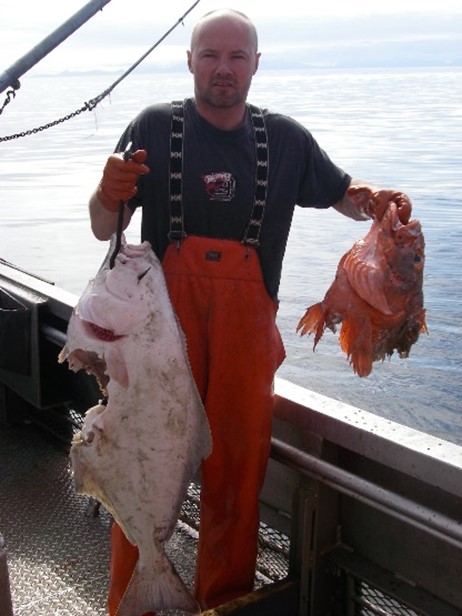
Figure 1. Damage to longline catch by toothed whales (Photo credit IPHC).
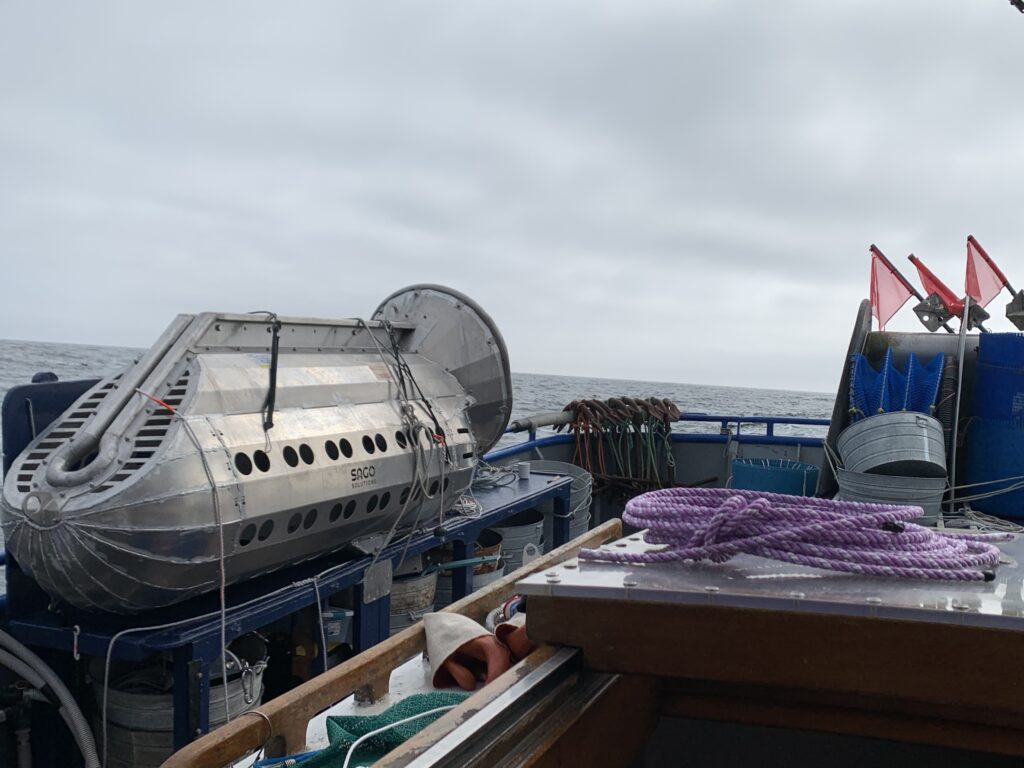
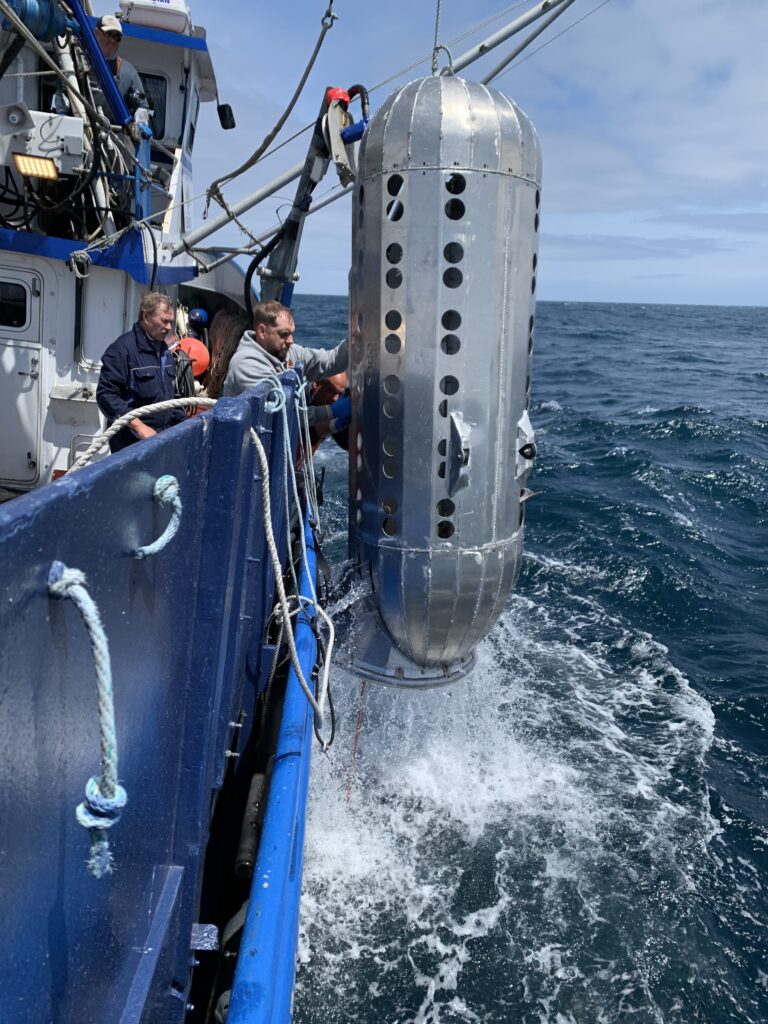
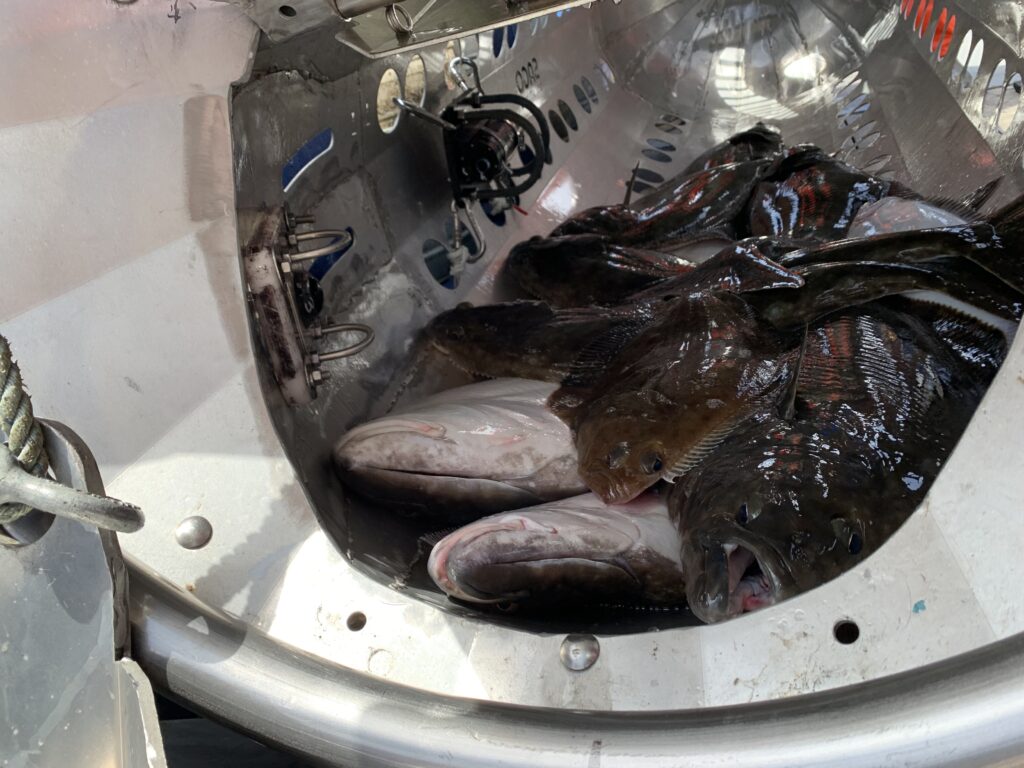
Figure 2. (L-R) Shuttle unit stowed on vessel, shuttle being hoisted onto vessel during retrieval, and fish contained within the shuttle before emptying on deck.

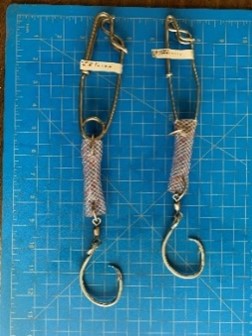
Figure 3. (L-R) Shroud showing end cap and openings, and variable strength snaps attached to hooks by shortened stiff gangions.
References
Dykstra, C.L., and Soderlund, E.D. 2010. Categorizing marine mammal depredation on IPHC standardized setline surveys. Int. Pac. Halibut Comm. Report of Assessment and Research Activities 2010:435-444.
Sigler, M., Lunsford, C. 2008. Sperm whale depredation of sablefish longline gear in the northeast Pacific Ocean. Mar. Mammal Sci. 24: 16-27.
Tixier, P., Lea, M.A., Hindell, Mark, A., Welsford, D., Mazé, C., Gourguet, S., and Arnould, J.P.Y. 2021. When large marine predators feed on fisheries catches: Global patterns of the depredation conflict and directions for coexistence. Fish and Fisheries 22(1), 31-53.
Werner, T., Northridge, S., McClellan Press, K., and Young, N. (2015). Mitigating bycatch and depredation of marine mammals in longline fisheries. ICES Journal of Marine Science 72(5), 1576-1586.
Wong, N. 2015. Marine mammal depredation on IPHC standardized setline surveys: a look at killer whales and sperm whales as major depredators in Alaskan waters. Int. Pac. Halibut Comm. Report of Assessment and Research Activities 2015:418-441.
1Sperm whale and longline interactions. http://seaswap.info/background/ Retrieved September 2017.

